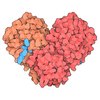[English] 日本語
 Yorodumi
Yorodumi- PDB-8bb3: Structure of human WDR5 and pVHL:ElonginC:ElonginB bound to PROTA... -
+ Open data
Open data
- Basic information
Basic information
| Entry | Database: PDB / ID: 8bb3 | ||||||
|---|---|---|---|---|---|---|---|
| Title | Structure of human WDR5 and pVHL:ElonginC:ElonginB bound to PROTAC with PEG linker (conformation #1) | ||||||
 Components Components |
| ||||||
 Keywords Keywords | LIGASE / E3-Ligase / WDR5 / VHL / Elongin | ||||||
| Function / homology |  Function and homology information Function and homology informationregulation of cellular response to hypoxia / histone H3Q5ser reader activity / histone H3K4me1 reader activity / RHOBTB3 ATPase cycle / negative regulation of receptor signaling pathway via JAK-STAT / Epigenetic regulation of gene expression by MLL3 and MLL4 complexes / MLL3/4 complex / transcription elongation factor activity / target-directed miRNA degradation / Set1C/COMPASS complex ...regulation of cellular response to hypoxia / histone H3Q5ser reader activity / histone H3K4me1 reader activity / RHOBTB3 ATPase cycle / negative regulation of receptor signaling pathway via JAK-STAT / Epigenetic regulation of gene expression by MLL3 and MLL4 complexes / MLL3/4 complex / transcription elongation factor activity / target-directed miRNA degradation / Set1C/COMPASS complex / MLL1/2 complex / elongin complex / ATAC complex / NSL complex / histone H3K4 methyltransferase activity / Replication of the SARS-CoV-1 genome / Cardiogenesis / VCB complex / Cul5-RING ubiquitin ligase complex / Cul2-RING ubiquitin ligase complex / intracellular membraneless organelle / SUMOylation of ubiquitinylation proteins / Formation of WDR5-containing histone-modifying complexes / histone methyltransferase complex / regulation of cell division / MLL1 complex / regulation of embryonic development / Pausing and recovery of Tat-mediated HIV elongation / Tat-mediated HIV elongation arrest and recovery / negative regulation of transcription elongation by RNA polymerase II / histone acetyltransferase complex / HIV elongation arrest and recovery / Pausing and recovery of HIV elongation / Tat-mediated elongation of the HIV-1 transcript / negative regulation of signal transduction / Formation of HIV-1 elongation complex containing HIV-1 Tat / ubiquitin-like ligase-substrate adaptor activity / Formation of HIV elongation complex in the absence of HIV Tat / RNA Polymerase II Transcription Elongation / Formation of RNA Pol II elongation complex / negative regulation of TORC1 signaling / RNA Polymerase II Pre-transcription Events / positive regulation of gluconeogenesis / negative regulation of autophagy / transcription initiation-coupled chromatin remodeling / protein serine/threonine kinase binding / transcription corepressor binding / gluconeogenesis / skeletal system development / Vif-mediated degradation of APOBEC3G / positive regulation of cell differentiation / Inactivation of CSF3 (G-CSF) signaling / TP53 Regulates Transcription of DNA Repair Genes / transcription initiation at RNA polymerase II promoter / transcription elongation by RNA polymerase II / Evasion by RSV of host interferon responses / Oxygen-dependent proline hydroxylation of Hypoxia-inducible Factor Alpha / RUNX1 regulates genes involved in megakaryocyte differentiation and platelet function / Regulation of expression of SLITs and ROBOs / PKMTs methylate histone lysines / RMTs methylate histone arginines / Activation of anterior HOX genes in hindbrain development during early embryogenesis / cell morphogenesis / ubiquitin-protein transferase activity / mitotic spindle / Antigen processing: Ubiquitination & Proteasome degradation / transcription corepressor activity / positive regulation of proteasomal ubiquitin-dependent protein catabolic process / Neddylation / regulation of gene expression / HATs acetylate histones / microtubule cytoskeleton / MLL4 and MLL3 complexes regulate expression of PPARG target genes in adipogenesis and hepatic steatosis / protein-containing complex assembly / Replication of the SARS-CoV-2 genome / ubiquitin-dependent protein catabolic process / protein-macromolecule adaptor activity / histone binding / cellular response to hypoxia / molecular adaptor activity / DNA-binding transcription factor binding / amyloid fibril formation / proteasome-mediated ubiquitin-dependent protein catabolic process / protein ubiquitination / regulation of cell cycle / protein stabilization / cilium / negative regulation of cell population proliferation / negative regulation of gene expression / ubiquitin protein ligase binding / regulation of transcription by RNA polymerase II / negative regulation of apoptotic process / regulation of DNA-templated transcription / positive regulation of DNA-templated transcription / enzyme binding / endoplasmic reticulum / negative regulation of transcription by RNA polymerase II / mitochondrion / proteolysis / nucleoplasm Similarity search - Function | ||||||
| Biological species |  Homo sapiens (human) Homo sapiens (human) | ||||||
| Method |  X-RAY DIFFRACTION / X-RAY DIFFRACTION /  SYNCHROTRON / SYNCHROTRON /  MOLECULAR REPLACEMENT / MOLECULAR REPLACEMENT /  molecular replacement / Resolution: 1.8 Å molecular replacement / Resolution: 1.8 Å | ||||||
 Authors Authors | Kraemer, A. / Doelle, A. / Knapp, S. / Structural Genomics Consortium (SGC) | ||||||
| Funding support |  Canada, 1items Canada, 1items
| ||||||
 Citation Citation |  Journal: To Be Published Journal: To Be PublishedTitle: Structure of human WDR5 and pVHL:ElonginC:ElonginB bound to PROTAC with PEG linker (conformation #1) Authors: Kraemer, A. / Doelle, A. / Knapp, S. / Structural Genomics Consortium (SGC) | ||||||
| History |
|
- Structure visualization
Structure visualization
| Structure viewer | Molecule:  Molmil Molmil Jmol/JSmol Jmol/JSmol |
|---|
- Downloads & links
Downloads & links
- Download
Download
| PDBx/mmCIF format |  8bb3.cif.gz 8bb3.cif.gz | 155.7 KB | Display |  PDBx/mmCIF format PDBx/mmCIF format |
|---|---|---|---|---|
| PDB format |  pdb8bb3.ent.gz pdb8bb3.ent.gz | 116.3 KB | Display |  PDB format PDB format |
| PDBx/mmJSON format |  8bb3.json.gz 8bb3.json.gz | Tree view |  PDBx/mmJSON format PDBx/mmJSON format | |
| Others |  Other downloads Other downloads |
-Validation report
| Summary document |  8bb3_validation.pdf.gz 8bb3_validation.pdf.gz | 581.9 KB | Display |  wwPDB validaton report wwPDB validaton report |
|---|---|---|---|---|
| Full document |  8bb3_full_validation.pdf.gz 8bb3_full_validation.pdf.gz | 585.5 KB | Display | |
| Data in XML |  8bb3_validation.xml.gz 8bb3_validation.xml.gz | 28.1 KB | Display | |
| Data in CIF |  8bb3_validation.cif.gz 8bb3_validation.cif.gz | 40.6 KB | Display | |
| Arichive directory |  https://data.pdbj.org/pub/pdb/validation_reports/bb/8bb3 https://data.pdbj.org/pub/pdb/validation_reports/bb/8bb3 ftp://data.pdbj.org/pub/pdb/validation_reports/bb/8bb3 ftp://data.pdbj.org/pub/pdb/validation_reports/bb/8bb3 | HTTPS FTP |
-Related structure data
| Related structure data |  7q2jS S: Starting model for refinement |
|---|---|
| Similar structure data | Similarity search - Function & homology  F&H Search F&H Search |
- Links
Links
- Assembly
Assembly
| Deposited unit | 
| ||||||||
|---|---|---|---|---|---|---|---|---|---|
| 1 |
| ||||||||
| Unit cell |
|
- Components
Components
-Protein , 4 types, 4 molecules JKLB
| #1: Protein | Mass: 11748.406 Da / Num. of mol.: 1 Source method: isolated from a genetically manipulated source Source: (gene. exp.)  Homo sapiens (human) / Gene: ELOB, TCEB2 / Production host: Homo sapiens (human) / Gene: ELOB, TCEB2 / Production host:  |
|---|---|
| #2: Protein | Mass: 11043.678 Da / Num. of mol.: 1 Source method: isolated from a genetically manipulated source Details: KAMYVKLISSDGHEFIVKREHALTSGTIKAMLSGPGQFAENETNEVNFREIPSHVLSKVCMYFTYKVRYTNSSTEIPEFPIAPEIALELLMAANFLDC Source: (gene. exp.)  Homo sapiens (human) / Gene: ELOC, TCEB1 / Production host: Homo sapiens (human) / Gene: ELOC, TCEB1 / Production host:  |
| #3: Protein | Mass: 18702.291 Da / Num. of mol.: 1 Source method: isolated from a genetically manipulated source Source: (gene. exp.)  Homo sapiens (human) / Gene: VHL / Production host: Homo sapiens (human) / Gene: VHL / Production host:  |
| #4: Protein | Mass: 35296.922 Da / Num. of mol.: 1 Source method: isolated from a genetically manipulated source Source: (gene. exp.)  Homo sapiens (human) / Gene: WDR5, BIG3 / Production host: Homo sapiens (human) / Gene: WDR5, BIG3 / Production host:  |
-Non-polymers , 5 types, 336 molecules 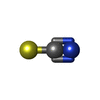
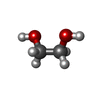
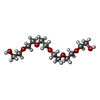
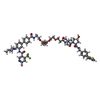





| #5: Chemical | ChemComp-SCN / #6: Chemical | ChemComp-EDO / #7: Chemical | ChemComp-P6G / | #8: Chemical | ChemComp-Q3X / ~{ | #9: Water | ChemComp-HOH / | |
|---|
-Details
| Has ligand of interest | Y |
|---|
-Experimental details
-Experiment
| Experiment | Method:  X-RAY DIFFRACTION / Number of used crystals: 1 X-RAY DIFFRACTION / Number of used crystals: 1 |
|---|
- Sample preparation
Sample preparation
| Crystal | Density Matthews: 2.59 Å3/Da / Density % sol: 52.52 % |
|---|---|
| Crystal grow | Temperature: 293 K / Method: vapor diffusion, sitting drop / pH: 6.8 / Details: 21-26% PEG 3350 0.4-1 M KSCN 0.1 M HEPES |
-Data collection
| Diffraction | Mean temperature: 100 K / Serial crystal experiment: N | ||||||||||||||||||||||||||||||
|---|---|---|---|---|---|---|---|---|---|---|---|---|---|---|---|---|---|---|---|---|---|---|---|---|---|---|---|---|---|---|---|
| Diffraction source | Source:  SYNCHROTRON / Site: SYNCHROTRON / Site:  SLS SLS  / Beamline: X06DA / Wavelength: 0.999995 Å / Beamline: X06DA / Wavelength: 0.999995 Å | ||||||||||||||||||||||||||||||
| Detector | Type: DECTRIS PILATUS 2M-F / Detector: PIXEL / Date: Feb 11, 2022 | ||||||||||||||||||||||||||||||
| Radiation | Protocol: SINGLE WAVELENGTH / Monochromatic (M) / Laue (L): M / Scattering type: x-ray | ||||||||||||||||||||||||||||||
| Radiation wavelength | Wavelength: 0.999995 Å / Relative weight: 1 | ||||||||||||||||||||||||||||||
| Reflection | Resolution: 1.8→47.46 Å / Num. obs: 70262 / % possible obs: 97.7 % / Redundancy: 5.9 % / Biso Wilson estimate: 25.37 Å2 / CC1/2: 0.999 / Rmerge(I) obs: 0.08 / Rpim(I) all: 0.036 / Rrim(I) all: 0.088 / Net I/σ(I): 12.2 / Num. measured all: 411472 / Scaling rejects: 1 | ||||||||||||||||||||||||||||||
| Reflection shell | Diffraction-ID: 1
|
-Phasing
| Phasing | Method:  molecular replacement molecular replacement | |||||||||
|---|---|---|---|---|---|---|---|---|---|---|
| Phasing MR | Model details: Phaser MODE: MR_AUTO
|
- Processing
Processing
| Software |
| ||||||||||||||||||||||||
|---|---|---|---|---|---|---|---|---|---|---|---|---|---|---|---|---|---|---|---|---|---|---|---|---|---|
| Refinement | Method to determine structure:  MOLECULAR REPLACEMENT MOLECULAR REPLACEMENTStarting model: 7Q2J Resolution: 1.8→42.91 Å / SU ML: 0.21 / SU R Cruickshank DPI: 0.1206 / Cross valid method: THROUGHOUT / σ(F): 1.34 / Phase error: 28.17 / Stereochemistry target values: ML
| ||||||||||||||||||||||||
| Solvent computation | Shrinkage radii: 0.9 Å / VDW probe radii: 1.1 Å / Solvent model: FLAT BULK SOLVENT MODEL | ||||||||||||||||||||||||
| Displacement parameters | Biso max: 74.21 Å2 / Biso mean: 32.2093 Å2 / Biso min: 18.91 Å2 | ||||||||||||||||||||||||
| Refinement step | Cycle: final / Resolution: 1.8→42.91 Å
|
 Movie
Movie Controller
Controller


 PDBj
PDBj




